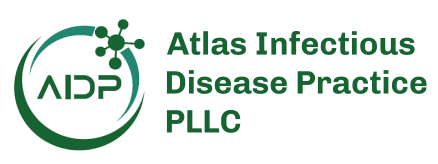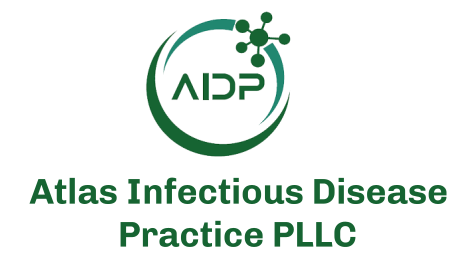Review: COVID-19 vaccines not tied to lower fertility in men or women
A systematic review and meta-analysis today in Vaccine finds no link between COVID-19 vaccines and infertility in men or women.
Researchers at a Rome hospital analyzed 29 studies from China, Israel, Italy, Russia, Turkey, Canada, and the United States until Jun 8, 2022. Of the studies, 13.8% were deemed of poor quality, 58.6% were of moderate quality, and 27.6% were of good quality.
Meta-analysis of studies of men before and after COVID-19 vaccination of any type showed similar sperm motility (44% vs 43%; 5 studies of 298 men), sperm concentration (50.6 million per milliliter [mln/mL] vs 55.4 mln/mL; 8 studies of 451 men), and sperm volume (2.6 vs 2.7 mL; 6 studies of 346 men).
Among women, biochemical and clinical pregnancy rates (0.51 vs 0.48; 7 studies and 0.45 vs 0.47; 10 studies, respectively) were comparable among vaccinated and unvaccinated groups. Biochemical pregnancy is defined as the presence of human chorionic gonadotropin (hCG), which can be detected as soon as 2 weeks after conception, while clinical signs of a fetus are detected only later. Levels of estradiol, a hormone that can indicate ovarian function, were also similar in five studies.
Fertility markers in men and women were unchanged before and after COVID-19 vaccination of any type (ie, Pfizer/BioNTech, Moderna, or Sputnik V). The latter is not authorized for use in the United States.
The researchers noted that, despite ample evidence of COVID-19 vaccine safety, misinformation and anti-vaccine campaigns have prompted unfounded fears over decreased fertility.
“Based on the studies published so far, there is no scientific proof of any association between COVID-19 vaccines and fertility impairment in men or women,” the authors wrote. “Considering that COVID-19 infection itself may be associated with impaired fertility, COVID-19 vaccination could act as a tool to preserve reproductive function through the prevention of COVID-19 infection.”
The team called for future research with longer follow-up times, systematic investigation, and greater representation.
Sep 12 Vaccine abstract
New York declares polio emergency, detects virus in fourth county
New York Gov. Kathy Hochul declared a polio emergency late last week, as the New York State Department of Health (NYSDOH) reported wastewater detection of the virus in a fourth county.
In a statement, the NYSDOH said Hochul declared a state disaster emergency to boost the level of resources needed to battle the outbreak, which includes beefing up immunization activities. The executive order expands the network of polio vaccine administrators and requires health providers to send polio immunization data to the health department, allowing officials to better target vaccination activities.
Wastewater sampling recently identified the first positive finding from Nassau County, which is part of the New York City metro area. Sampling had earlier detected positives from Rockland, Orange, and Sullivan County, as well as New York City. The health department said the Nassau County sample that tested positive was collected in August and has been genetically linked to the case of paralytic polio identified in a man from Rockland County, which ii said is further evidence of expanding community spread.
In July, officials reported a vaccine-derived poliovirus type 2 case in a man from Rockland County, marking the nation’s first appearance of the virus since 2013. In early August, the state announced the results of a genetic analysis of the man’s samples, which suggests they were linked to wastewater samples collected from Rockland County, as well as those from Jerusalem, Israel, and London, England.
Sep 9 NYSDOH press release
Programs to fight HIV, TB, and malaria partially recover from COVID punch
Programs to fight HIV, tuberculosis (TB), and malaria in 2021 rebounded from a 2020 drop in key efforts due to the COVID-19 pandemic, the Global Fund said today in its latest annual assessment.
It said in 2020 that the pandemic had a devastating impact on the fight against the three diseases, which led to the first decline in results in the Global Fund’s 20-year history.
Peter Sands, the group’s executive director, said in a press release, “Although most countries that fight HIV, TB and malaria have started to recover from the ravages of COVID-19, we need to accelerate our efforts if we are to fully recover lost ground and get back on track towards ending these diseases by 2030.”
The group said many low- and middle-income countries were able to leverage the labs, surveillance systems, and other systems used to fight HIV, TB, and malaria to respond to COVID-19.
The global fund’s report covered key results for 2021, such as the 23.3 million people who received antiretroviral therapy for HIV and 5.3 million people treated for TB, including 110,000 who were treated for drug-resistant TB. For malaria, 280 suspected cases were tested, and 148 million people were treated.
Support for the programs exceeded 2019 levels, but the programs are running behind the goal for 2021, meaning efforts are still off track to reach sustainable development goals. Sands said the group hopes to raise $18 billion next week at a replenishment conference in New York, which he added would save another 20 million lives from 2024 through 2026.
Sep 12 Global Fund press release






